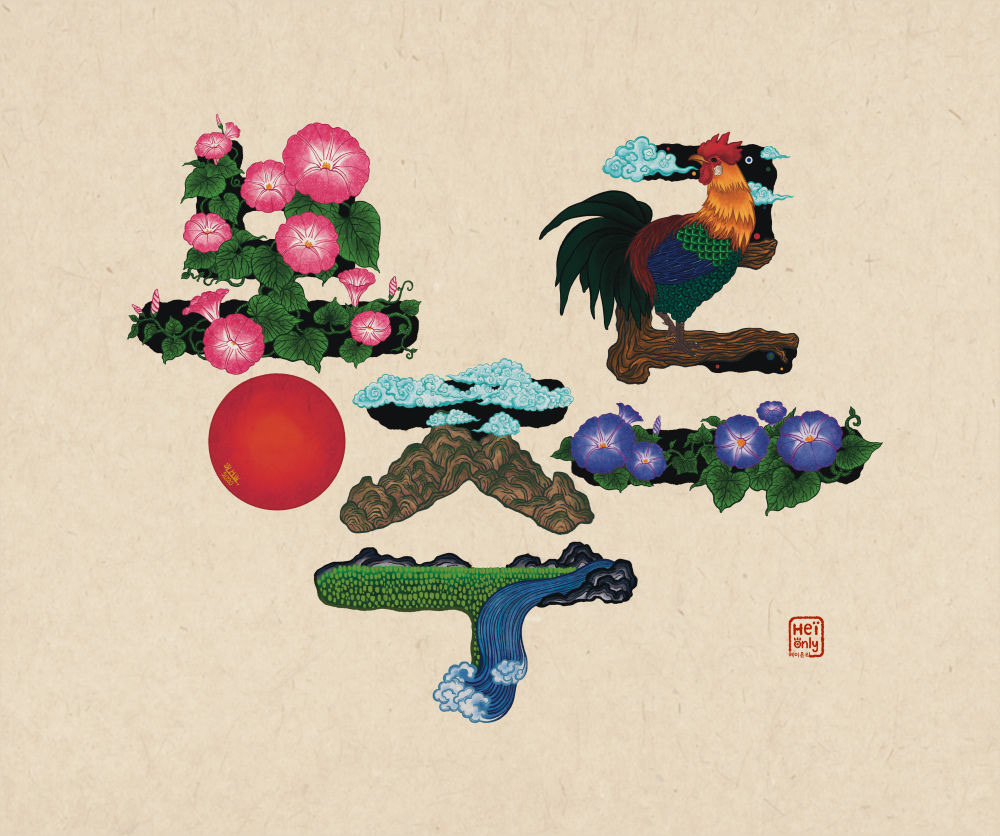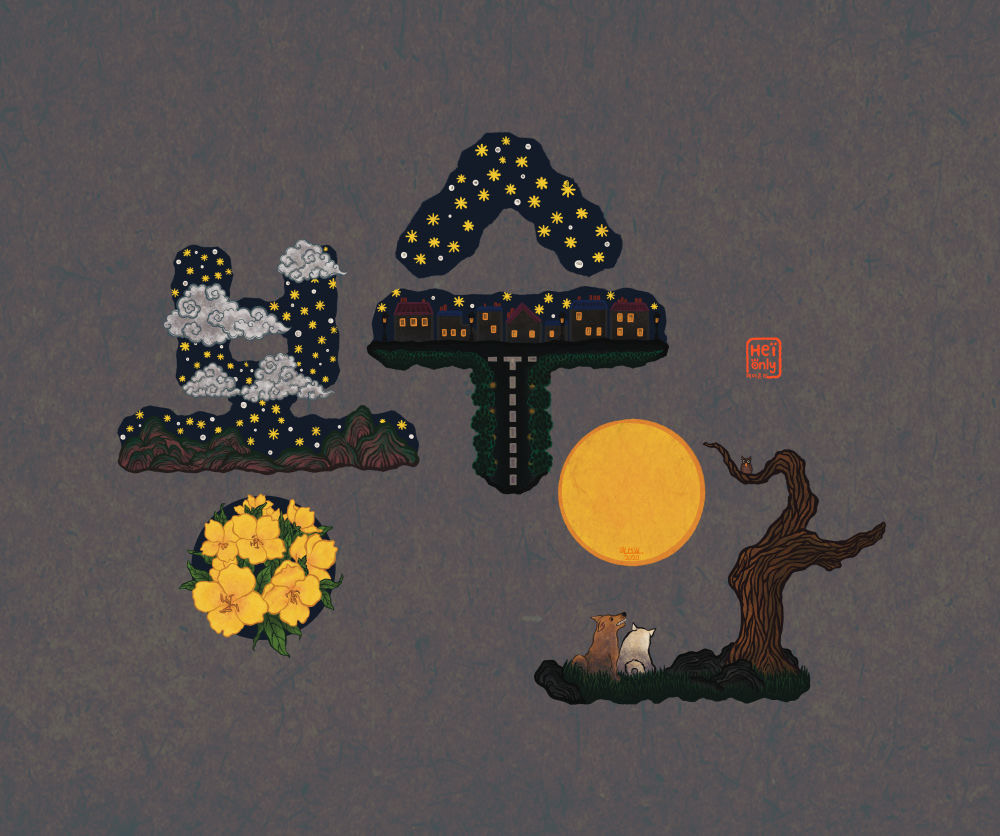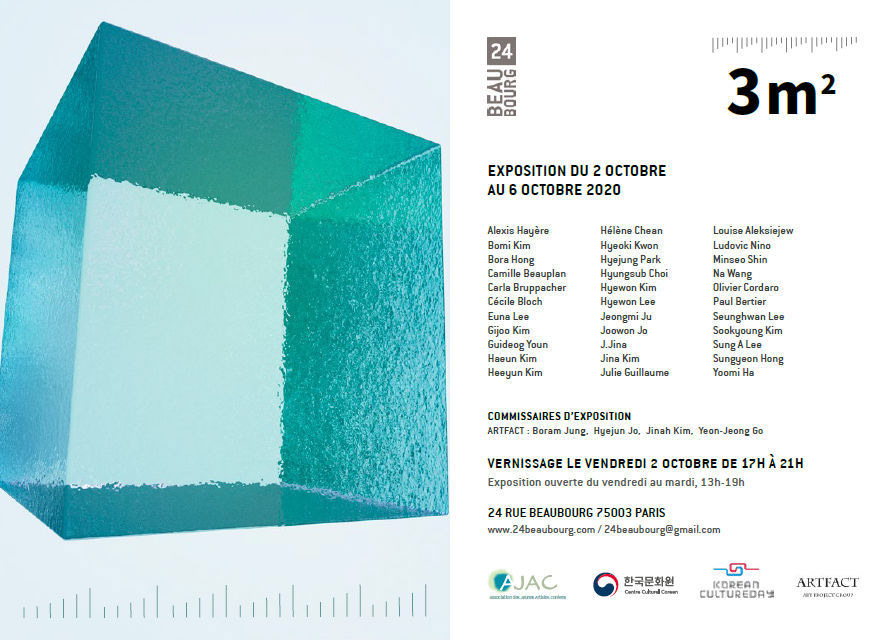Galerie 24 Beaubourg
24 Rue Beaubourg 75003 Paris, France


Connexion de la prononciation, Bonjour, 봉주르, 2020, Digital painting (Left), 46 x 55 cm
Connexion de la prononciation, Bonsoir, 봉수와, 2020, Digital painting (Right), 46 x 55 cm
It has been 11 years since I left Korea to live abroad. Among all the experiences I’ve had during my stay, language has always been the most frequently discussed topic when I tell small stories. A pile of lost parcels due to communication errors, a mountain of misunderstandings caused by unintentional blunders… All of these experiences have ultimately shaped the color of my memories and created unique relationships with certain people. In order to communicate freely in a foreign country, we must first understand the history, culture, and customs of that country. And to understand all of this, we must first learn to read and write the language used in that country. During the learning process, when faced with a word or expression that is impossible to decipher, we use a dictionary or simply search on Google to find images representing the word in question. And when that’s not enough, we turn to our dear native friends, who explain the culture and context of certain idiomatic expressions. It is at that moment that we learn that letters are not always enough to understand a language. This is how I encountered Munjado.
Munjado refers to a type of Korean popular painting, which is also a unique form of visual art in the Chinese cultural sphere. To reinterpret the meaning of a character through a drawing, numerous associations of artistic symbols are combined, and various techniques and methodologies are used in this form of art. Illiterate people learned virtues through these calligraphies, decorated with flowers and other drawings. Over time, a movement emerged to separate characters and drawings, and since then, the term Munjado has evolved and diversified, especially with the use of splendid and decorative colored letters. As someone who has always been a student of foreign languages, I immediately became interested in analyzing this extraordinary form of art. Through the flow of globalization, we constantly face communication problems. The evolution of translation machines has never been enough to convey the messages of the original documents. Because, as we have already mentioned, language is not just a sequence of words, but a blend of the minds and mentalities of the language users. A language cannot be acquired simply through memorization. Munjado, by introducing elements of humor, helps people easily understand the meaning and origin of a character. In fact, this particular popular art invites its people to perceive letters as an illustrated book for children. And if we replaced these Chinese characters with Korean letters, or even other languages, would the Munjado still function in the same way?
In preparing this work, I tried to reconstruct the lexical meaning, culture, and context connoted in each letter. I used different symbols both directly and indirectly to help with understanding. I can imagine three types of reactions from the viewers facing this work. First, those who understand the meaning of the letter and leave, second, those who understand the meaning and want to learn more about this mysterious language, and finally, those who will stay to solve the hidden puzzle. I hope that my work will not only serve as an opportunity to discover the Unknown World, but also as a place of encounter and communication between viewers, guiding them in their first steps into this mysterious world. I hope it will inspire them to discover new languages, cultures, and stories, in an era where, although everyone seems to be connected, we are, in fact, very distant from each other.
일상생활에서 우리가 쓰는 가장 기본적인 말은 안녕하세요 라는 말이 아닐까?
내가 프랑스에 처음 도착하고 배운 말은 <<봉주르, 봉수와 – 안녕하세요>>였다. 이 단어는 몇 세기 전부터 모든 사람들이 쓰고 있고 그 뒤에는 다양한 인간관계가 얽히고 얽혀 있다. 간단한 인사를 나누기 전, 대상과의 관계에 따라 우리가 느끼는 감정은 다양하다. 그리고 몇 마디의 인사 후에 다양한 이야기가 우리가 기다리지 않아도 기다리고 있다.
내가 한국 사람이라서 프랑스어 발음을 한국어로 표현한 것은 아니다. 발음을 중심으로 모국어가 아닌 다른 언어의 알파벳으로 표기하였을 때, 상대방이 알파벳만 읽을 수 만 있다면 뜻이 전달된다는 것이 재미있는 사실이었다. 여기에 재미있는 에피소드가 있다. 내 친구의 프랑스친구는 한글의 자음과 모음을 읽고 쓸 수 있지만 한국어는 모른다. 어느 날, 프랑스어를 발음 그대로 한글의 문자로 표기해서 편지를 줬단다. 결과는 대성공, 친구는 그걸 찰떡같이 읽고 이해했다. 이처럼 언어라는 것이 표기문자에 따라 표현방식은 다르지만 결국은 서로 이해하고 이어질 수 있는 마법 같은 힘을 가지고 있다고 생각한다. 상대방의 언어를 조금이라도 알아야 되는 거잖아라고 불평하는 사람은 당연히 있겠지만, 그 작은 배움이 서로의 마음이 이어지는 계기가 되면 좋을 것 같아서 이번 작업을 시작하였다. 세상은 점점 더 커지고 연결되어지는 속도에 비해, 상대의 문화와 언어를 이해하지 못하여 오해하고 미워하는 상황이 얼마나 많은가. 나의 작업을 통해 대중들에게 바라는 것이 두가지가 있다. 첫번째로는 한국사람들이 봉주르, 봉수와가 무엇이지? 라는 의문과 함께 프랑스의 간단한 인사와 문화에 관심을 가지는 것이다. 두번째는 프랑스사람들이 내 작품을 보고 알지못하는 그림 문자가 사실은 자신들의 모국어를 발음 그대로 한글로 표현한 것임을 알았으면 한다. 더 나아가 흥미를 느끼고 한국의 전통 미술과 문화에 한층 더 관심을 가지는 것이다. 이처럼 언어의 발음과 표기문자가 어우러진 것처럼 우리들의 고향, 생김새, 말은 달라도 소통에는 한계가 없다는 것을 표현하고 싶었다.
September 2020 in Paris
